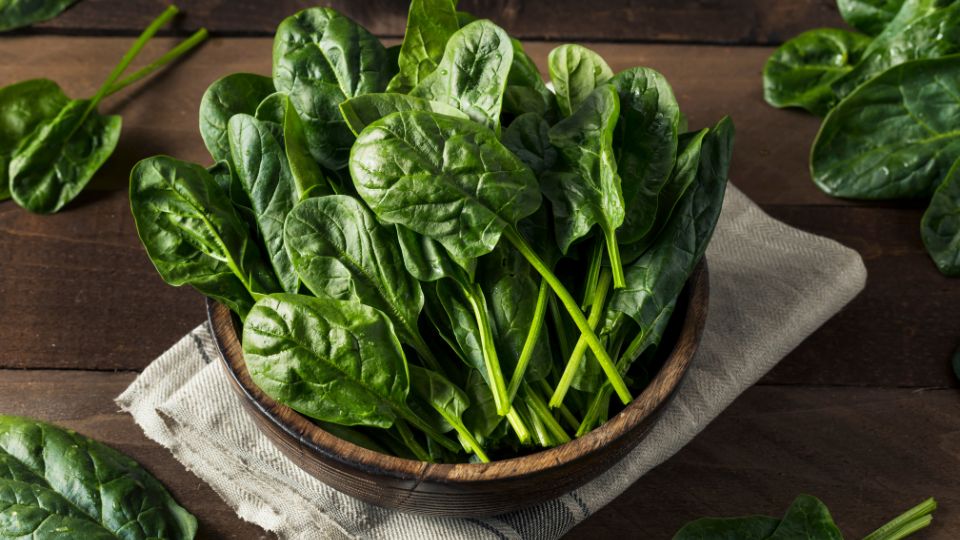- October 10, 2023
- By: Dr. Jamie Ahn
Symptoms of Oxalate Toxicity: Joint Pain, Skin Rashes,
Insomnia & More
Are you plagued by chronic pain, kidney stones, cloudy urine, or unexplained skin rashes? Have multiple doctor visits left you scratching your head with more questions than clarity? You may want to consider the possibility of oxalate toxicity. It could be the invisible culprit causing your symptoms. Here’s a list of additional signs
you should look out for:
● Pain: This is experienced anywhere throughout your body, particularly
in the urinary tract, joints, muscles, eyes, head, intestines, and the
genitals (such as vulvodynia).
● Kidney Stones: Oxalates bind with calcium to form kidney stones.
● Persistent Fatigue; Sleep Issues: Feeling excessively weary or having
difficulty sleeping may be linked to high oxalate levels.
● Mental Health/ Cognitive Issues: Too many oxalates have been linked
to headaches, depression, anxiety, and brain fog.
● Yeast Overgrowth: An excess of Candida (yeast) might indicate high
levels of oxalate.
● Skin Abnormalities: Rashes and hives could be your body’s response to
high levels of oxalate.
● Burning Sensation in Feet: A common symptom of oxalate toxicity
● Joint; Muscle Ailments: Oxalates could trigger or worsen conditions
similar to fibromyalgia or arthritis.
● Low Bone Density: Excessive oxalates can interfere with calcium
absorption, leading to low bone density.
● Abnormal Urine; Stool: Cloudy urine, urine with visible crystals, or
sandy stools could indicate high oxalate levels.
● Urinary Issues: Frequent urination, urinary pain, and interstitial cystitis
can be symptoms of excess oxalates.
Now that we’ve gone over some signs that may indicate too much oxalate in your body, it’s important to know what oxalates are, where they come from, and what role they play in nature and our bodies.
While the symptoms mentioned above might seem frightening, it’s important to know that they can be managed effectively. The first step is understanding what oxalates are, how they affect your body, and what you can do to stop their potential damage. So, let’s take a closer look.
What are Oxalates?
Perhaps you’ve stumbled upon the term, oxalate while Google searching for ways to improve your health or maybe it’s an entirely new term for you. Either way, the following information sheds light on this relatively unknown health topic.
Oxalic acid is an organic compound that occurs naturally in plants, animals, and even humans. It’s a small molecule that attaches itself to a mineral to become an oxalate (OX).
When oxalates bind with calcium and other minerals it creates crystals with razor- sharp edges. These crystals are like tiny shards of glass, extremely irritating, and can create inflammation in your tissues.
They are often called anti-nutrients because they can interfere with how your body takes in important nutrients like calcium, iron, and magnesium. It’s as if oxalates are grabbing these nutrients and not letting them do their jobs.
Now that we understand what oxalates are and how they can cause harm, it’s equally important to recognize what can influence your body’s ability to handle them. This knowledge will not only allow you to adjust your lifestyle but also help you to create a healthier environment for your body to thrive.
If you’re generally healthy, eating a moderate amount of oxalates usually doesn’t cause problems. But, some things can affect how well your body handles oxalates including the following:
● Micronutrient Deficiencies: Deficiencies of vitamins B1 and B6 can cause
your body to generate more oxalates.
● Fat Malabsorption: If your body isn’t processing fats efficiently, excess fat can
bind to calcium. This prevents calcium from binding with oxalates, allowing
them to enter the bloodstream and tissues.
● Leaky Gut/ Gut Inflammation: Conditions such as leaky gut syndrome allow
oxalates to enter your bloodstream.
● Genetic Predispositions: Some individuals have a reduced capability to
handle oxalates due to genetic factors.
● Overconsumption of High Oxalate Foods: Consuming excessive amounts of
foods high in oxalates can strain your body’s ability to process them. These
include many so-called “healthy” foods like spinach, almonds, chia seeds, and
plantains.
● Antibiotic Use: Antibiotics can eliminate Oxalobacter formigenes, which is
the primary bacterial species responsible for breaking down oxalates in our
system.
● Dysbiosis: If there’s an insufficient presence of beneficial bacteria in your gut,
this imbalance (dysbiosis) can hinder the breakdown of oxalates.
● Yeast/Fungal Overgrowth: Yeasts, particularly Candida, produce oxalates and
also convert collagen into oxalates.
While managing oxalates might seem challenging due to factors like your diet and genetics, understanding them is the initial step toward maintaining your health. We’ve established what oxalates are and the impact they can have on your body. Next, let’s explore how dietary adjustments can better control your oxalate levels
A Low Oxalate Diet Is The Best Way to Prevent Oxalate Toxicity
All hope is not lost when it comes to managing oxalate levels in the body. In fact, it’s through the power of nutrition that we can best combat oxalate toxicity. Here are ways you can adjust your diet for better health.
According to Oxalate expert, Sally K. Norton, the most effective strategy to alleviate the discomfort of oxalate toxicity involves the following 3 steps:
1. Gradually discontinue the consumption of high-oxalate foods
2. Replace with healthy, low-oxalate alternatives
3. Slowly reduce your oxalate intake to less than 60 mg per day with the
goal being 50 mg or less per day
Below is a list of high oxalate foods to watch out for and their corresponding oxalate
levels per serving.
Extremely High Oxalate (41+ mg/serving) –
Spinach, Beet Greens, Swiss Chard, Rhubarb,
Peanuts, Chocolate, Carob, Amaranth, Sesame Seeds, Cashews, Soy, Almonds, Plantains,
Buckwheat
Very High Oxalate (20-40 mg/serving)
Vegetables: Potatoes-Russet/Idaho/Fingerling, Sweet potatoes, Yams, Beets, Eggplant, Hearts of Palm, Jerusalem Artichokes, Okra
Fruits: Kiwi, Pomegranate, Starfruit, Tangelo, Blackberries, Citrus peel, Figs, Gooseberries, Guava
Beans: Navy, Pink, Pinto, Red, White, Adzuki, Anasazi, Black, Cannellini, Great Northern
Grains: Quinoa, Teff
Nuts: Pine nuts, Pistachios, Walnuts, Brazil nuts, Hazelnuts, Macadamia nuts, Pecans
Seeds: Cocoa Powder, Cumin, Curry Powder, Ginger, Onion Powder,Turmeric, Black/Green Tea, Chia, Hemp, Poppy, Herbs/Spices: Allspice, Caraway Seeds, Cinnamon, Clove
High/Medium Oxalate (5-20 mg/serving) – Vegetables: Carrot, Celery, Celeriac, Collard
Greens, Endive, Fennel, Green Beans, Kale (Curly), Parsnip, Tomato, Asparagus, Broccoli,Brussels Sprouts
Fruits: Raspberries, Strawberries, Tangerines, Banana, Currants, Dates, Goji berries,
Grapefruit, Mango, Nectarines, Oranges (mandarin), Papaya, Pineapple,
Beans: Garbanzo (Chickpea), Brown Lentils, Lima Beans, Mung Beans
Grains/Flours: Wild Rice Flour, Sorghum Flour, Tapioca Flour, Brown Rice, Garbanzo Bean Flour, Millet, Oats, Potato (red), Pumpkin Seed Flour, Rice Flour (white or brown), Sweet Rice Flour
How to Begin a Low-Oxalate Diet
A low-oxalate diet includes foods that are low in oxalates, supplemented with a few items that are medium or high in oxalates.
A low-oxalate diet restricts oxalate consumption to a maximum of 40 to 60 mg per day (based on a 2,000-calorie dietary intake). The aim is to limit the oxalate content of each meal to around 7-10 mg.
It’s very important to “gradually eliminate oxalates from your diet. As a general guideline, aim to reduce oxalate consumption by 5-10% per week.
If your diet currently includes many high-oxalate foods, transitioning to a low-oxalate diet may take time, sometimes even months.
Begin by maintaining your consumption of high oxalate foods, but reduce the portion sizes, and continue to decrease this gradually over time. Adapting to a low-oxalate diet may seem challenging at first, but remember, it’s a
gradual process.
By taking small, incremental steps, you can make a significant impact on your health over time. Let’s take a look at the foods you should aim to include in your diet.
Low/Very Low Oxalate (0.0-4.9 mg/serving)
Vegetables: Red Bell Pepper, Rutabaga, Squash (Acorn, Spaghetti, & Butternut), Turnip root and greens, Water Chestnuts, Zucchini, Bok Choy, Broccoli (boiled), Cauliflower, Cabbage,
Cucumber, Kale (Lacinato), Lettuce, Mustard Greens (boiled), Onions, Radish
Fruits: Melons, Oranges (naval), Passion fruit, Peaches, Pears, Plums, Apples, Avocados, Blueberries, Cherries, Cranberries, Grapes, Lemons
Beans: Red Lentils, Yellow Split Peas, Black-eyed Peas
Grains/Flours: Coconut Flour, Potato Starch, Corn Starch, Water Chestnut Flour, Bean Flour (garbanzo, yellow/green pea), Seed Flour (pumpkin seed, flax)
Seeds: Pumpkin Seeds, Flax
Meat, poultry, fish, & eggs, Fats & oils
Important Things to Remember When Beginning a Low-Oxalate Diet
Now, as you embark on this journey towards a low-oxalate diet, it’s essential to remember certain guidelines. The following are some key things to bear in mind during this transition
● Consume foods that contain very low; or low amounts of oxalates
● Limit foods that contain medium; or high; amounts of oxalates
● Avoid foods containing extremely high; or very high; amounts of oxalates
● Prepare foods (boil and discard the water) to lower the oxalate levels
The hidden impact oxalates have on health is often underestimated and overlooked by healthcare providers. As a result, the daily foods you eat may be contributing to a wide range of health symptoms, including painful kidney stones.
Recognizing the link between diet and your health is the first step in restoring wellness. Transitioning to a low-oxalate diet is the most powerful way to reduce the effects of oxalates while also enhancing your health and well-being.
If you need support transitioning to a low-oxalate diet, Good News Naturopathic Clinic is ready to guide you on your health journey. Book a call with us to get started on your healing journey today!

